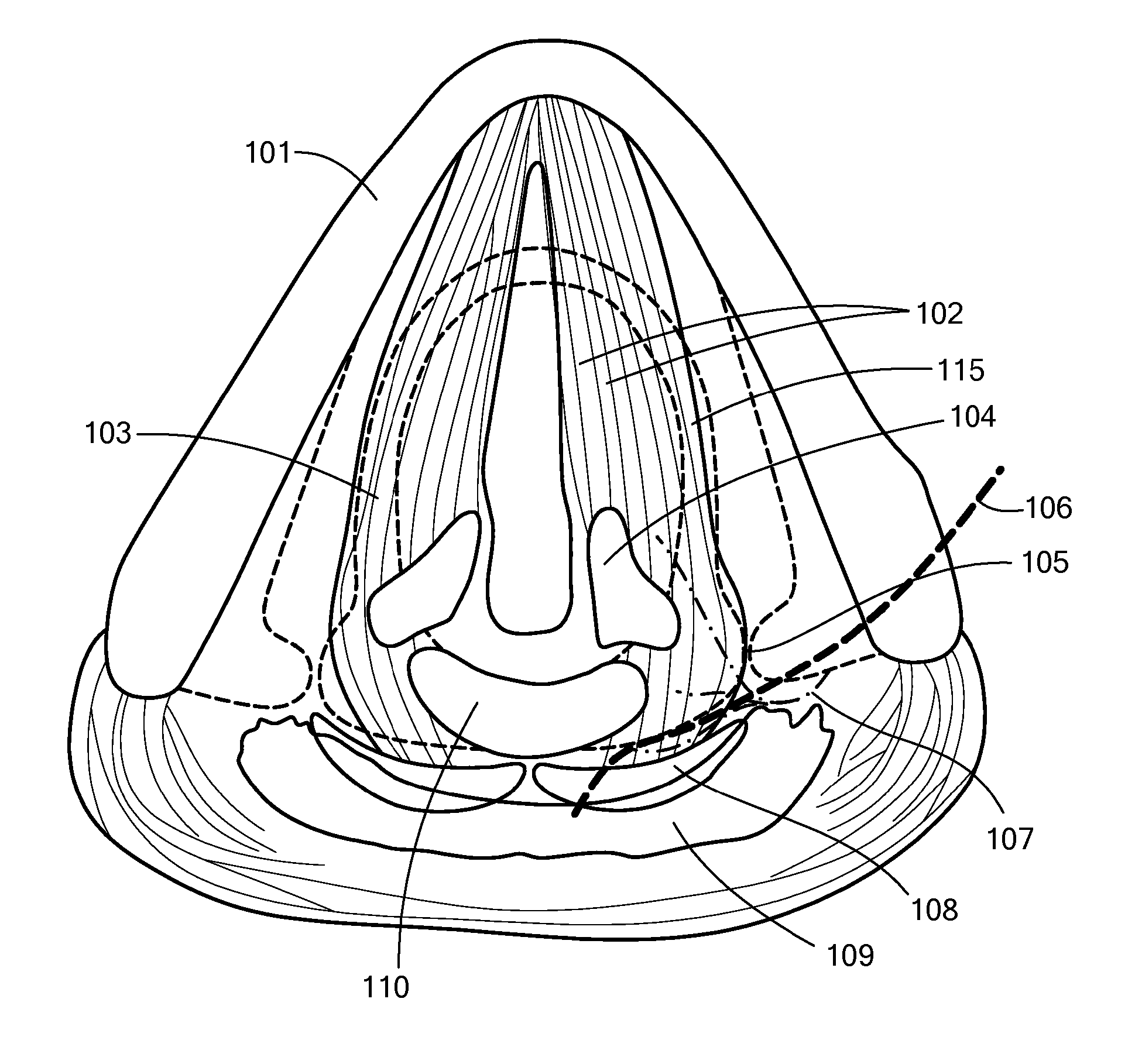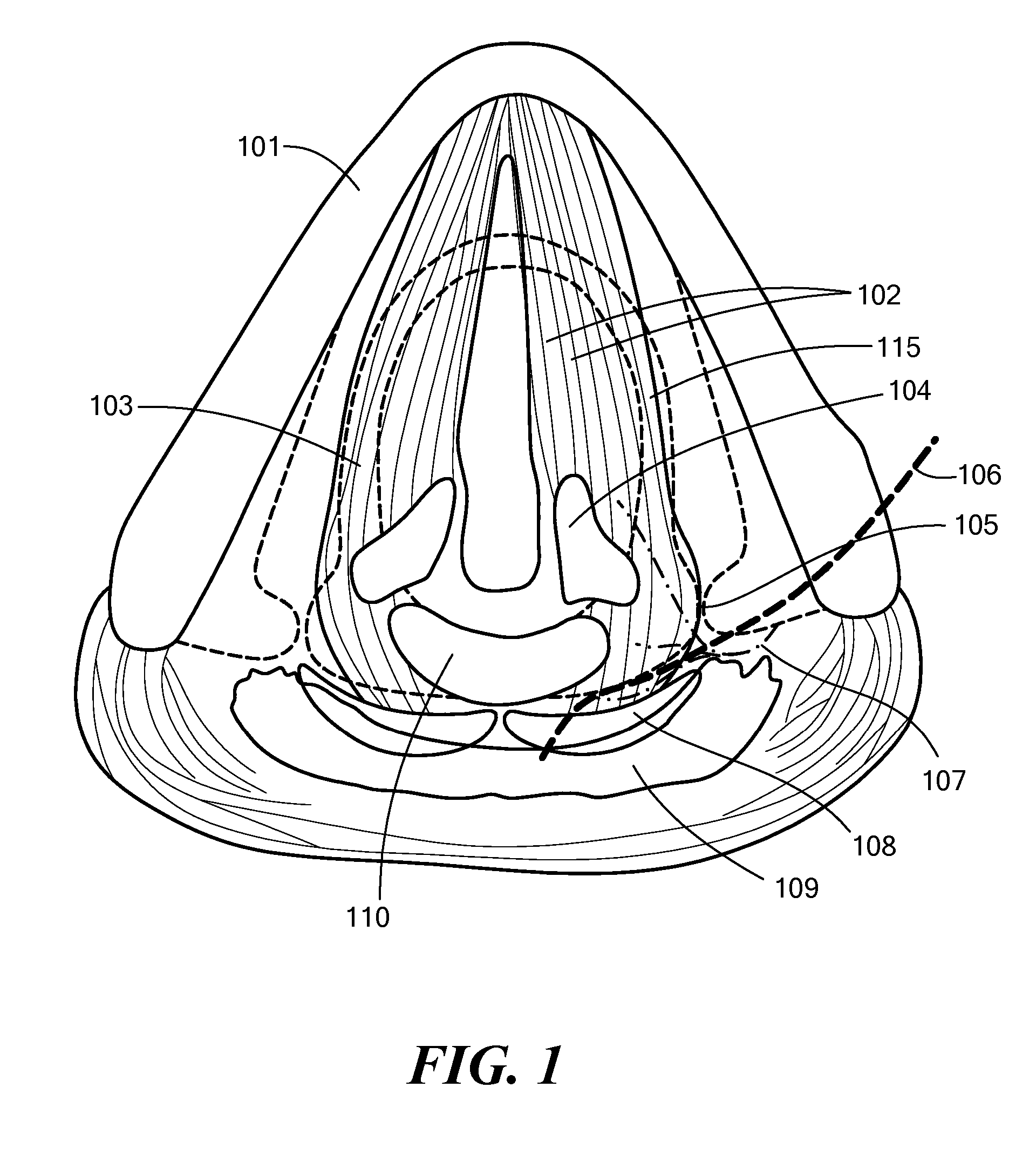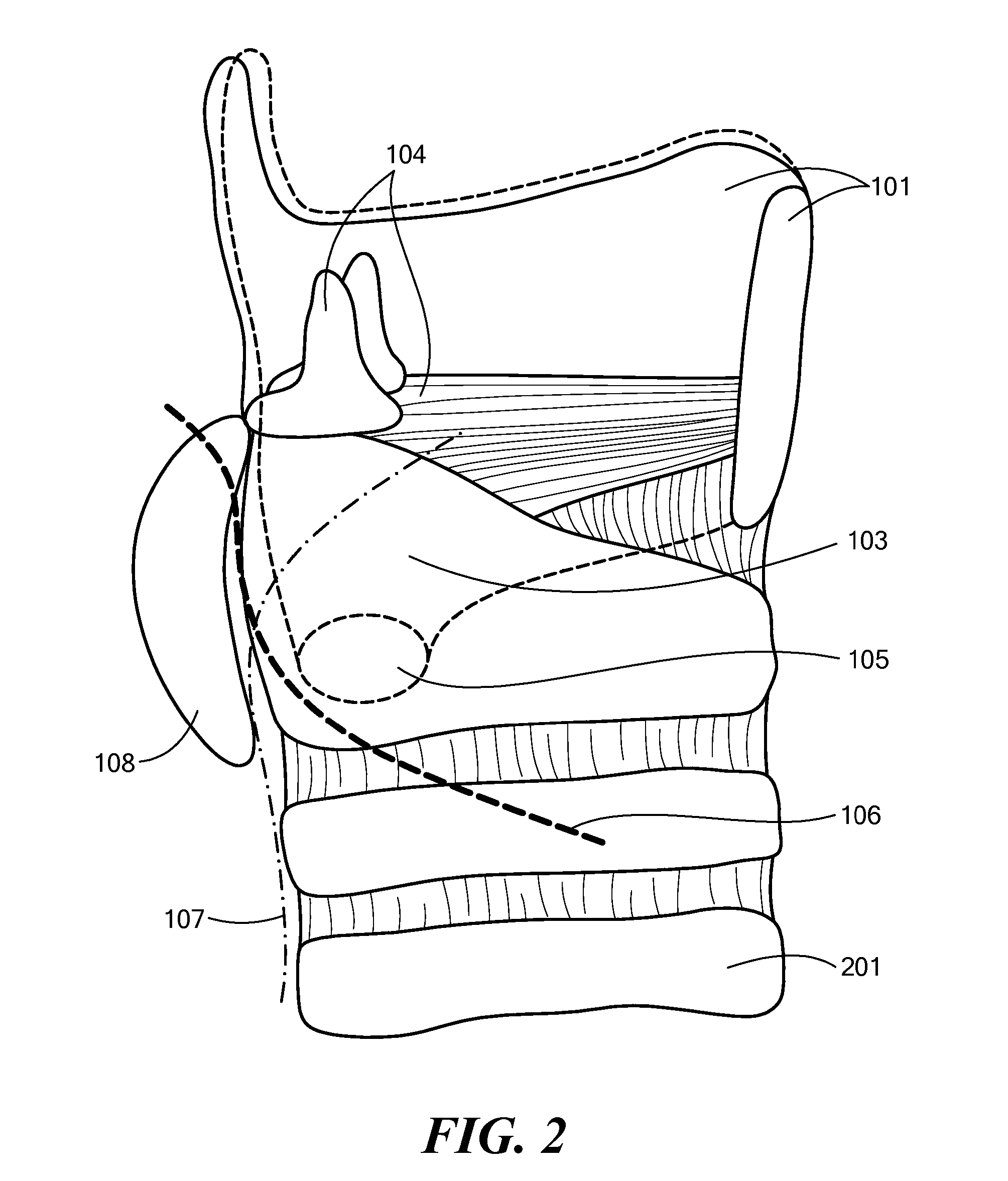System, Apparatus, and Method for Facilitating Interface with Laryngeal Structures
a technology of laryngeal structure and interface, applied in the field of laryngeal structure insertion system, can solve the problems of affecting the function of the esophageal electrode, and affecting so as to inhibit the operation of the laryngeal structure and stimulate the laryngeal structur
- Summary
- Abstract
- Description
- Claims
- Application Information
AI Technical Summary
Benefits of technology
Problems solved by technology
Method used
Image
Examples
Embodiment Construction
[0066] Definitions. As used in this description and the accompanying claims, the following terms shall have the meanings indicated, unless the context otherwise requires:
[0067] A “subject” may be a human or animal.
[0068] An “interface element” is an element for directly or indirectly interfacing with the laryngeal structures of a subject and may include, but is in no way limited to, an electrode (e.g., for conveying electrical signals to and / or from an anatomical structure such as for stimulating, sensing, recording, etc.), a sensor (e.g., for monitoring an anatomical structure), a catheter (e.g., for conveying a fluid or other material to and / or from an anatomical structure), a delivery device (e.g., a pump or syringe for delivering a medication, drug, nutrient, fluid, or other material to an anatomical structure), a heat delivery device (e.g., a cauterization tool), a cold delivery device (e.g., a cryogenic tool), a surgical device (e.g., a scalpel or biopsy tool for removing ti...
PUM
 Login to View More
Login to View More Abstract
Description
Claims
Application Information
 Login to View More
Login to View More - R&D
- Intellectual Property
- Life Sciences
- Materials
- Tech Scout
- Unparalleled Data Quality
- Higher Quality Content
- 60% Fewer Hallucinations
Browse by: Latest US Patents, China's latest patents, Technical Efficacy Thesaurus, Application Domain, Technology Topic, Popular Technical Reports.
© 2025 PatSnap. All rights reserved.Legal|Privacy policy|Modern Slavery Act Transparency Statement|Sitemap|About US| Contact US: help@patsnap.com



